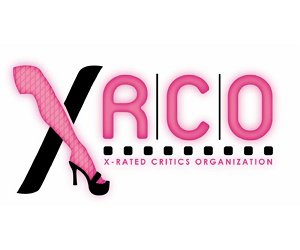Source: AP
By: JESSIE SEYFER
 (SAN FRANCISCO, CA) — In its 1950s heyday, Finocchio’s guest list was a who’s who of A-list stars: Bob Hope, Lucille Ball, Milton Berle, Lana Turner, Jack Benny, Bette Davis.
(SAN FRANCISCO, CA) — In its 1950s heyday, Finocchio’s guest list was a who’s who of A-list stars: Bob Hope, Lucille Ball, Milton Berle, Lana Turner, Jack Benny, Bette Davis.
After 63 years of the finest in drag queen cabaret, rent hikes are forcing the club “where the most beautiful women are men”to close its doors.
The curtain will fall on the last show Saturday night despite the club’s landmark status and lines wrapping around the block.
“We all feel bad,” says club owner Eve Finocchio. “It’s like losing a friend.”
Although Finocchio’s is still popular, it has lost the exotic appeal it cultivated since opening in 1936 in the city’s red-light district of sex shows and strip joints along the edge of the Italian North Beach section.
Drag queens are showing up everywhere from talk shows to Hollywood films. (In 1995, action star Wesley Snipes donned gloves, double-thick hose and attitude to co-star with Patrick Swayze and John Leguizamo in the film “To Wong Foo, Thanks for Everything, Julie Newmar.”)
When Joe Finocchio opened the club, it was illegal for performers to enter and exit the building in costume. He was forced to ward off police who repeatedly threatened his business. He was used to it: He had worked in his father’s San Francisco speakeasy during Prohibition.
But Finocchio’s has never been about shock value, his widow says.
“We like to feel we have more class than drag queens. In fact, I hate that expression,” she said. “I prefer male actresses.”
Emcee Brian Keith says the club, with its PG-rated strip teases, lip-synched songs and magic acts, is bona fide theater “in the tradition of La Cage Aux Folles and the cabarets of Paris and Berlin. It’s that caliber.”
“I think Finocchio’s means as much to San Francisco as Coit Tower and the Transamerica Pyramid,” says Keith, dressed in a long white dress dripping with sequins, feather boas and wigs of every color waiting for his costume changes.
Whether it’s high art or men singing falsetto, what’s certain is that the show is full of humor. Keith warms up the crowd with self-deprecating jokes: “Ladies and gentlemen, as you can see I’m not the real thing but I’m a sure thing.”
A striptease artist, introduced as “the prettiest she that’s a he that you’ll ever see,” leaves much to the imagination and doesn’t push the mainstream audience to discomfort.
“The show is not about being gay. It’s not about sex,” says Keith. “It’s about fun – forgetting your troubles for an hour.”
During its heyday, Finocchio’s had shows seven nights a week. Now it’s down to three shows each on Friday and Saturday nights.
“People would rather stay home and rent a movie,” Mrs. Finocchio says.
She said she decided to close after her landlord raised the rent from $4,000 to $6,000 on the 8,000 square foot space, and asked her to pay the taxes and handle any plumbing repairs on the building built in 1883.
For Keith, the closing of Finocchio’s is proof that San Francisco is becoming gentrified. A few years ago, the Condor Club shut down its strip show famous for performer Carol Doda and re-opened as a sports bar.
“You see neighborhoods all over with things like the Gap moving in,” Keith says. “San Francisco is being torn apart. It’s not the little town that happened to be a city anymore.”
Over the years, Finocchio’s has made a few “stars” of its own, including Don McLean, also known as Lori Shannon, who played Archie Bunker’s drag queen friend on “All in the Family.” Another was Lucien Phelps, a straight, married man with children who starred as Sophie Tucker for 27 years.
“We’ve always tried to keep up a good show,” says Mrs. Finocchio. “Some were good, some were not-so-good, but they were all sincere.”

















